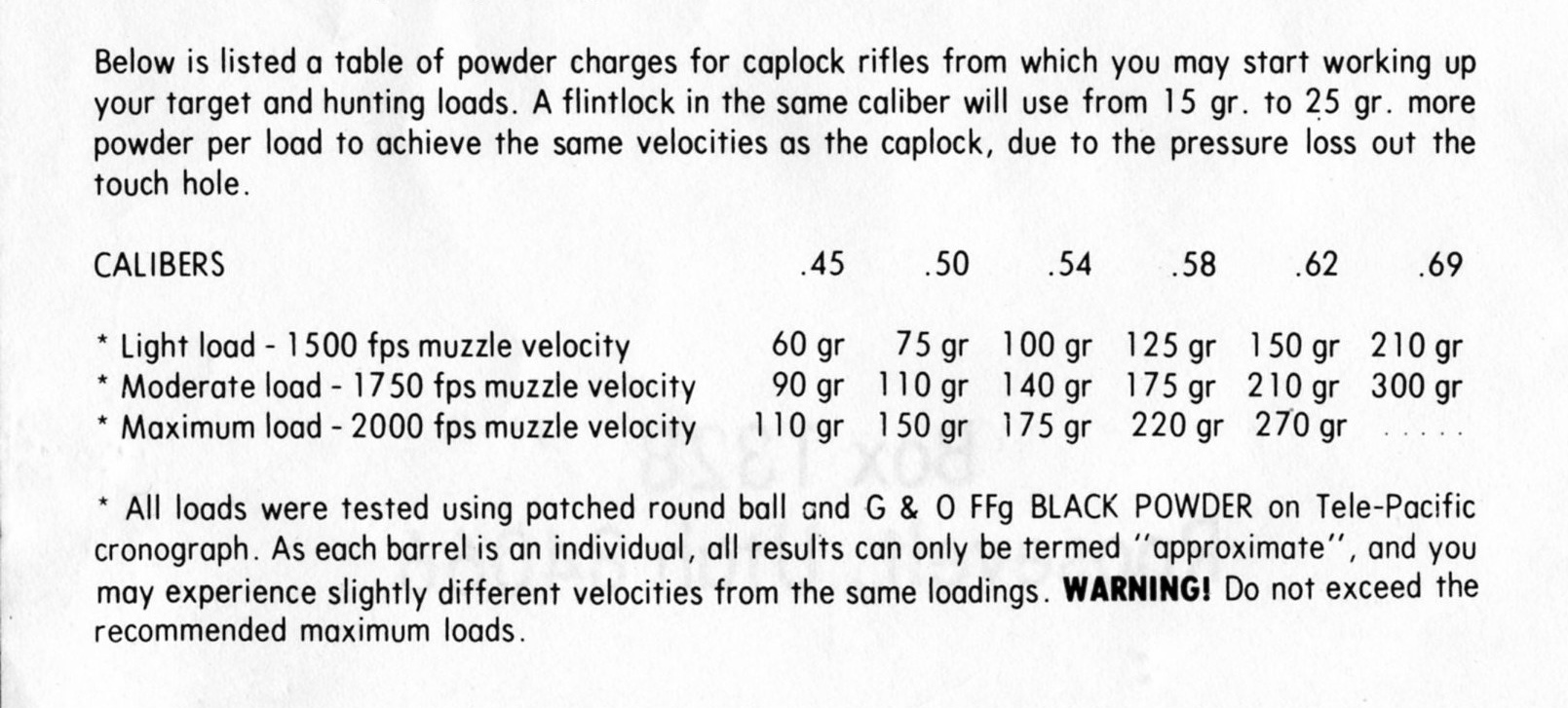This is the manual you are referring (see below)? The one that shows 8500 psi for 80gr 2fg as maximum and subsequently less than 40gr. of 3fg to equal the same pressures? Rice barrels are unsafe for any 3fg loads??
How is it that everyone essentially says they use 3fg in their guns but now no comments?
Walk
Yes, that's one of the books I suggested.
You would have to ask Rice about the 3Fg load, I can't speak for them. But what you are seeing in the data is why any smart person would not try to tell you what maximum load you can use in your rifle.
Lyman measured that data in laboratory conditions, and they still get some unusual and sometimes conflicting data. That's very much the nature of black powder and muzzleloaders. Each gun is different. Each person loads differently with different patch material and lube and compression on the powder. Some swab between shots, some don't. There are too many variables involved.
What the Lyman data tells me looking at the results from the different barrel lengths and twists with 2Fg versus 3Fg is that one has a smaller margin of error with 3Fg and has to be more careful that they do not double charge or double load because of the pressure differences.
It's not so much a question of maximum safe load as potential consequences when an operator error occurs.
80 grains 2F will get the job done. Balls decelerates quickly. A few FPS at the muzzle will be inconsequential at 75 yards. If you load hotter and faster the ball decelerate more quickly.
To
Scota@4570's point, look at the data for Pressure and Energy @ 100 yds for 80 grs and 120 grs of 2Fg and 3Fg.
2FG
80 gr 8,500 psi 407 ft/lbs
120 gr 11,500 psi 502 ft/lbs
35.3% more psi gives only 23.3% more Energy @ 100 yds
3Fg
80 gr 10,900 psi 419 ft/lbs
120 gr 16,800 psi 525 ft/lbs
54.1% more psi gives only 25.3% more Energy @100 yds
A lot of people like using 3Fg in their .50 and .54 calibers because they don't have to use as much powder as 2Fg and it sometimes burns cleaner. I suspect these are mostly target loads. The number of folks that push the limit with hot 3Fg loads is probably a lot fewer.







